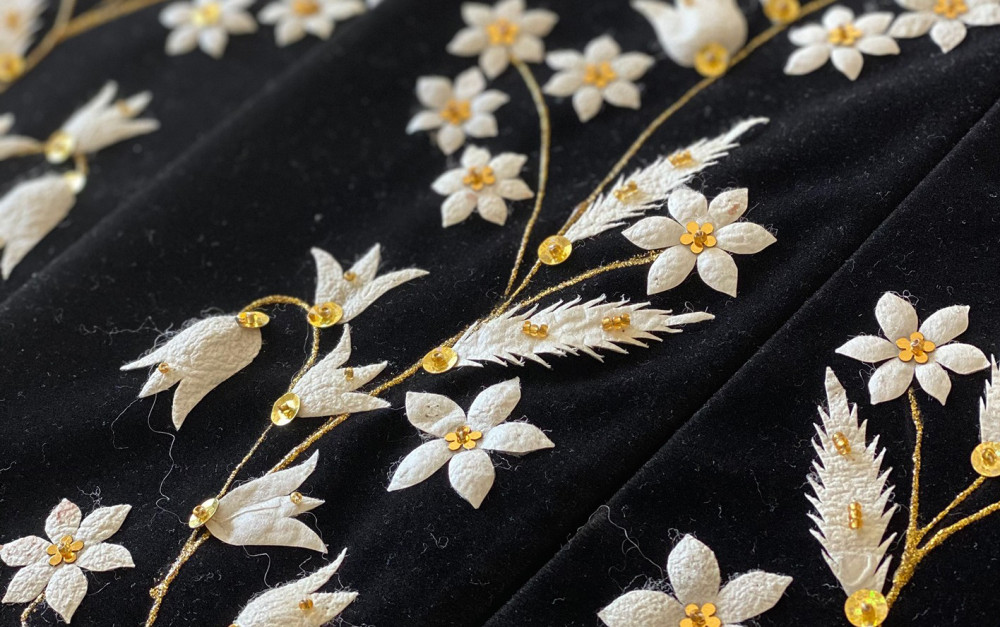
Cocoon Embroidery (West Azerbaijan Province)
Cocoon embroidery refers to a kind of embroidery in which the halves of a cocoon are sewed on a piece of fabric. Cocoon embroidery is a relief sewing like filigree, Sermeh, sequin and stone sewing. Like other kinds of decorative sewing, the aocoon embroidery has also a long history. However, we do not know from where and when did exactly it start.
The only obvious thing is that it was being used alongside other decorative embroideries during the Parthian period. In addition, people had a special interest in this art during the Sassanid rule. The continuation of this tradition is seen centuries later in the Islamic period particularly we have some objects left from Seljuk and Mongols on the Kaaba curtains and other wall tableaus. Marco Polo tells us about the various decorative embroideries popular among Mongols among which we can see the cocoon embroidery and Zaqre Douzi. Chardin, the French explorer, also refers to the special attentions of Safavid authorities and officials to different types of relief embroideries. He called this kind of embroidery so pretty and eye-catching in his itinerary.
The popular motives in this handicraft are mostly birds, flowers and marginal flowers. The products are used for decorating the wall tableaus and neck of clothes. The material needed for doing this craft is some piece of fabric (usually velvet, broadcloth, dark blue or black satin), the painted or unpainted leather, simple, golden or silver Sermeh, opaque Sermeh, the spherical, wheat- or tear-like pearl, the water-based cold glue, some strong thread, glass wool for embossing, glass beads and sequins. In order to cut the cocoon, you need to first put the pattern on a piece of paper and cut it out. Then, put the cut paper on the cocoon and mark the outlines using a pencell. Then, you need to clip the cocoon following the line in order to have the same pattern on the cocoon.
Then, you should separate two layers of the skin of the cocoon in order to make it narrower. After preparing all pieces, order them on the fabric based on the pattern and start to sew using a needle and thread. The glass beads and sequins are also used to decorate the cocoon skin on the fabric. The artisan usually puts some piece of cotton below the cocoon in order to facilitate the process of sewing. Different kinds of sewing in cocoon embroidery include: stem sewing using Sermeh and sewing pearls. This picturesque handicraft is used for decorating tableaus, cloths, tablecloth and so on. The art of cocoon embroidery is popular among the people of Urmia, Isfahan, Kashan, Taft, Mehriz, Yazd and Rasht.